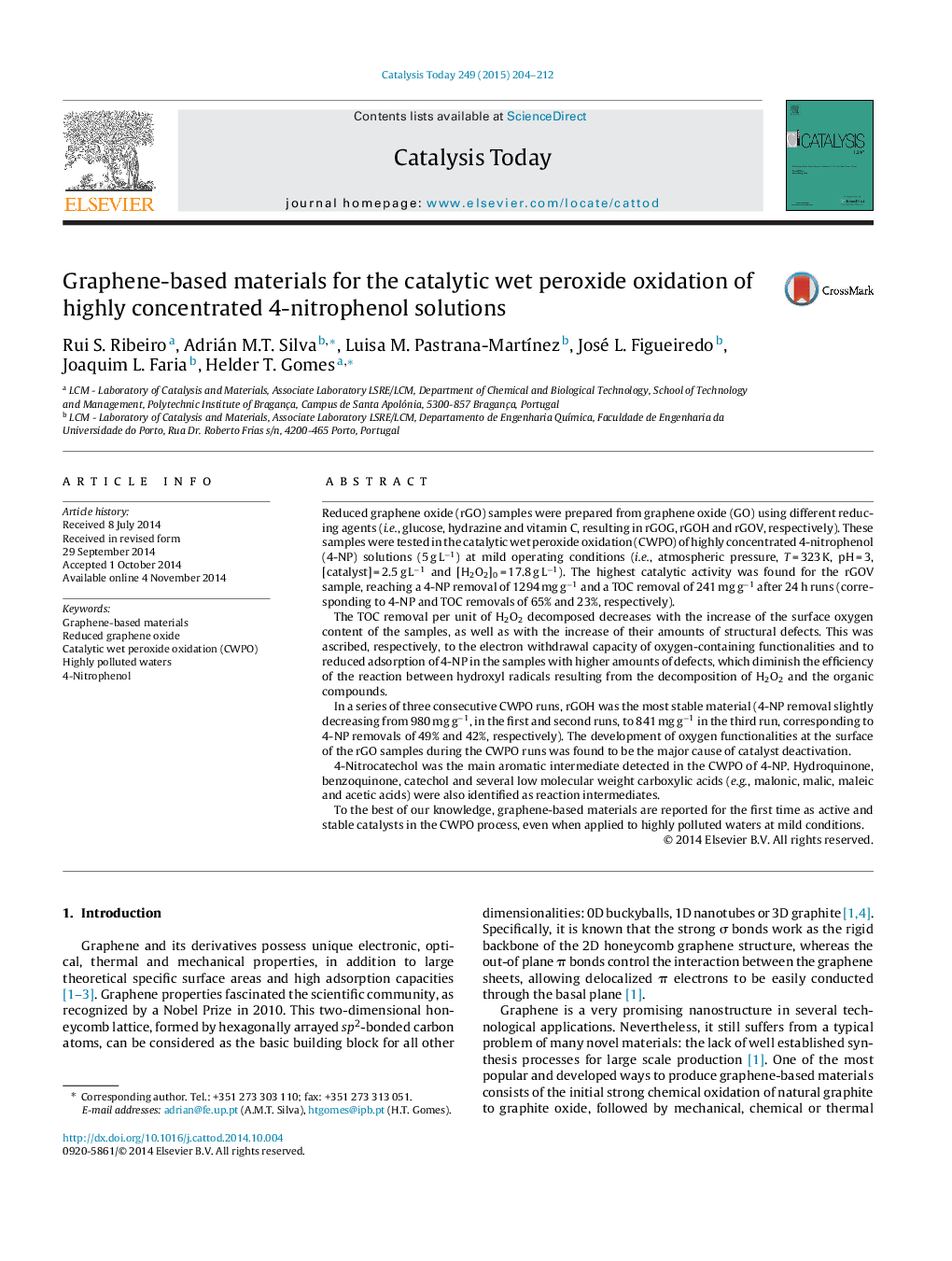| کد مقاله | کد نشریه | سال انتشار | مقاله انگلیسی | نسخه تمام متن |
|---|---|---|---|---|
| 53728 | 46981 | 2015 | 9 صفحه PDF | دانلود رایگان |
• Reduced graphene oxides (rGO) obtained from graphene oxide are tested for CWPO.
• The graphene-based materials are active and stable catalysts.
• High efficiency is obtained in the CWPO of 4-nitrophenol (4-NP) solutions.
• Mineralization of 4-NP involves the formation of aromatics and carboxylic acids.
Reduced graphene oxide (rGO) samples were prepared from graphene oxide (GO) using different reducing agents (i.e., glucose, hydrazine and vitamin C, resulting in rGOG, rGOH and rGOV, respectively). These samples were tested in the catalytic wet peroxide oxidation (CWPO) of highly concentrated 4-nitrophenol (4-NP) solutions (5 g L−1) at mild operating conditions (i.e., atmospheric pressure, T = 323 K, pH = 3, [catalyst] = 2.5 g L−1 and [H2O2]0 = 17.8 g L−1). The highest catalytic activity was found for the rGOV sample, reaching a 4-NP removal of 1294 mg g−1 and a TOC removal of 241 mg g−1 after 24 h runs (corresponding to 4-NP and TOC removals of 65% and 23%, respectively).The TOC removal per unit of H2O2 decomposed decreases with the increase of the surface oxygen content of the samples, as well as with the increase of their amounts of structural defects. This was ascribed, respectively, to the electron withdrawal capacity of oxygen-containing functionalities and to reduced adsorption of 4-NP in the samples with higher amounts of defects, which diminish the efficiency of the reaction between hydroxyl radicals resulting from the decomposition of H2O2 and the organic compounds.In a series of three consecutive CWPO runs, rGOH was the most stable material (4-NP removal slightly decreasing from 980 mg g−1, in the first and second runs, to 841 mg g−1 in the third run, corresponding to 4-NP removals of 49% and 42%, respectively). The development of oxygen functionalities at the surface of the rGO samples during the CWPO runs was found to be the major cause of catalyst deactivation.4-Nitrocatechol was the main aromatic intermediate detected in the CWPO of 4-NP. Hydroquinone, benzoquinone, catechol and several low molecular weight carboxylic acids (e.g., malonic, malic, maleic and acetic acids) were also identified as reaction intermediates.To the best of our knowledge, graphene-based materials are reported for the first time as active and stable catalysts in the CWPO process, even when applied to highly polluted waters at mild conditions.
Figure optionsDownload high-quality image (220 K)Download as PowerPoint slide
Journal: Catalysis Today - Volume 249, 1 July 2015, Pages 204–212
